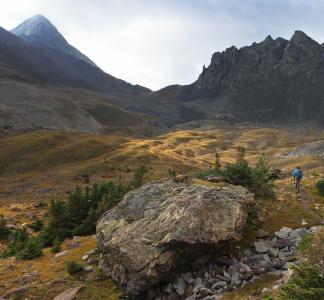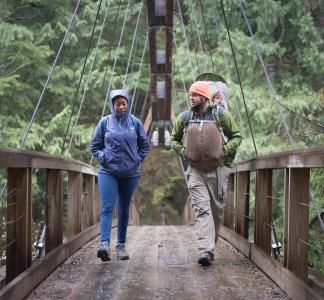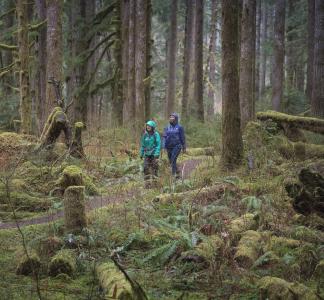Mason Cummings, TWS
Protecting wild places in Sierra Nevada national forests
The Sierra Nevada is a mountain range home to both Yosemite and Sequoia National Parks spanning 400 miles and including 12 million acres of public lands. It is home to some of the largest trees in the world: the giant sequoias. Spotted owls and Pacific fishers thrive in the forests of the Sierra Nevada.
However, not every wild place in the Sierra Nevada is currently protected. We believe the remaining wild places in the Sierra Nevada deserve greater protection.
We recently conducted on-the-ground inventories of unprotected roadless lands in the region. We found and documented areas eligible for wilderness designation, the most protective classification available for wildlands. Now, we are working with the U.S. Forest Service and conservation partners to secure new wilderness recommendations and conservation areas for wildlife in the Sierra Nevada.
Sierra Nevada forests showcase the best of America’s landscape views and magnificent peaks, like Mt. Whitney, while also providing space for wildlife like the Pacific fisher to thrive.
The threat
Irresponsible over-snow vehicle use threaten Sierra Nevada national forests, conflicting with other recreation activities and disturbing wildlife. We are advocating a moratorium on new over-snow motor vehicle areas and trails in roadless areas, including newly surveyed areas with wilderness characteristics.
Forest planning is an important way to set the standard for resource uses, including logging, protection of wildlife and botanical areas and recommended wilderness designations. The Sierra Nevada national forests are currently revising their forest plans to meet new standards, which protect plants and animals while allowing some extractive uses.
We are conducting the first new inventories of wild lands in the Sierra Nevada in 25 years. We have catalogued roadless areas in the Stanislaus, Eldorado, Tahoe and Plumas National Forests that are eligible to be designated as wilderness. In the summer of 2019, we plan to inventory the Lassen and Modoc National Forests.
What we're doing
-
Finding roadless areas
Identifying roadless areas that need protections.
-
Advocating for legislation
Working to limit the negative impacts of over-snow vehicles.
-
Advocating in forest planning
Weighing in on forest plan revisions to gain new wilderness recommendations and conservation areas for wildlife.



